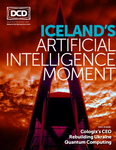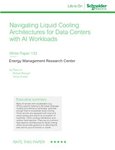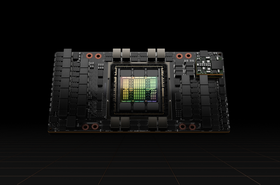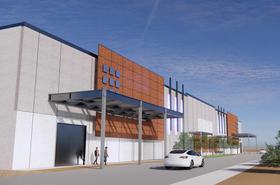Data centers, traditionally the backbone of many technological advancements, are now faced with the imperative to be more than mere infrastructure providers. The rapid growth of AI highlights the pressing need for data centers to be even more agile, innovative, and collaborative – powering this new era.
The boom in AI and ML, coupled with continued growth in Cloud and Enterprise workloads, demands a re-evaluation of data center strategies, designed in partnership by operators and customers. Beyond proximity, power, and speed, success in this age necessitates foresight – solving customer challenges before they arise.
This includes managing sustainable power at scale, and implementing designs that support rapid and scaleable AI deployments and resonate with operational needs, whilst consciously aligning with values that benefit the data center provider, the customer, and wider society responsibilities.
Rethinking scalability: AI's influence on location dynamics
In a time when the technological landscape was meticulously mapped for the sake of minimizing latency, the integration of AI and ML workloads is orchestrating a shift in priorities. Unlike their latency-sensitive counterparts, these advanced workloads challenge the traditional principles that often dictated optimal data center locations.
The result is a profound reconsideration of what defines an ideal site, with a notable preference emerging for 200-500MW campuses equipped with renewable energy access.
This strategic pivot marks a departure from the ingrained focus on latency minimization. Instead, it underscores a holistic approach that recognizes the changing dynamics of AI/ML integration.
The shift towards larger campuses is not merely a consequence of the less latency-sensitive nature of AI/ML workloads; it is a calculated move that acknowledges the non-linear cost relationship inherent in these operations; larger campuses can often afford providers, and therefore customers, greater efficiencies.
This bold step challenges the long-standing industry norm, presenting a compelling argument that prioritizing sheer scale over proximity can yield more efficient and sustainable outcomes.
Sustainability as a crucial component
A commitment to sustainability is further underscored by the recognition of the crucial role energy efficiency plays in the ongoing transformation of data center operations. The move towards larger campuses must align seamlessly with the imperative to reduce environmental impact. The emphasis on sustainability is not just a buzzword but a strategic acknowledgment that these data centers, powered by renewable energy, are integral to a future where efficiency and environmental consciousness go hand in hand.
While some may consider access to power, water, and connectivity traditional requirements from a customer's perspective that will remain unchanged. Data center providers must continue to work hard to innovate to lower Power Usage Effectiveness (PUE) and Water Usage Effectiveness (WUE) and in turn, reduce their reliance on diesel generators. Sourcing only 100 percent renewable energy and Power Purchase Agreements (PPAs) to use dedicated solar and wind farms to power data centers are all critical initiatives.
In this new era, the industry is also placing an unprecedented emphasis on the benefits a data center can bring to the local community. This includes striving to build facilities that are harmonious with the local environment and reducing the negative aesthetics of data center buildings.
Flexibility in design: Adapting to a dynamic landscape
In the fast-paced evolution of data center technologies, achieving 'AI readiness' goes beyond mere technological prowess - it hinges on the imperative of early engagement with those customers who need AI-ready infrastructure.
This strategic engagement not only ensures a symbiotic relationship but also serves as the linchpin for developing a truly flexible and customized infrastructure that can seamlessly evolve with the fast-growing and ever-changing technological landscape.
The essence of this early engagement model transcends conventional collaboration. It is a dynamic and continuous dialogue that lays the groundwork for what can be termed as a "built-to-suit" approach. Unlike static solutions, this approach is inherently responsive, recognizing that the needs and challenges of customers are not carved in stone but rather subject to constant evolution and refinement.
Defying labels: The emergence of megascale campuses
It is clear that AI is changing data center requirements and discussions are underway about what to name the next generation of data centers - Hyperscale 2.0, Megascale, Gigascale, and various other options are on the table.
However, "Hyperscale" isn't merely about physical size; it's a reflection of the specific customer it refers to. The term "megascale campuses to host hyperscale customers” more accurately defines the ongoing industry transformations. However, regardless of the terminology, one common challenge is evident; meeting the significant capacity demands of these customers. The current limitations of European hyperscale facilities to address the growing AI market underscore this challenge, and megascale campuses may be the answer.
The role of Edge computing: Ensuring connectivity and latency sensitivity
Beyond the megascale campuses, the role of Edge computing remains important. As companies adopt AI/ML strategies, the demand for Edge solutions becomes more pronounced. A fully integrated AI solution requires connectivity to all aspects of a business's systems. While core language models and inference models may reside in megascale campuses, there is an ongoing need for Edge solutions in metropolitan cities, ensuring full integration.
Edge computing retains its importance for highly latency-sensitive applications such as live broadcasts. Additionally, for some companies, Edge data center solutions are essential for cost-effectiveness. For example, content distribution networks delivered via local edge data centers facilitate seamless iOS upgrades for iPhones, negating the need for individual data centers in every country.
A road to innovation
As we navigate these transformative trends, one thing becomes abundantly clear - the data center landscape is undergoing a profound evolution. The integration of AI/ML workloads, the redefinition of scalability, and the strategic development of AI-ready megascale campuses collectively mark a new chapter in the story of data centers. This is not merely about keeping up with demand; it's about steering our course toward a data-driven future that is as dynamic as it is sustainable.
Providers need to remain committed to delivering data centers that underpin the ever-growing data-driven digital economy, powering the information and applications that we all rely on day to day. The continued growth of AI (Statista predicts that the AI market will reach $305.9bn in 2024 and show an annual growth rate of 15.83 percent resulting in a market volume of $738.8 by 2030) opens up exciting opportunities for providers to further explore design, construction and operational innovation and redefine what's possible in the data center industry, whilst ensuring commitment to operational excellence and sustainability.








